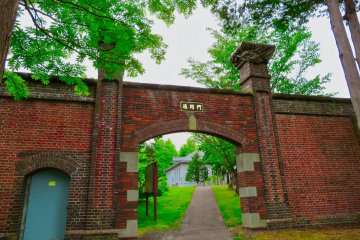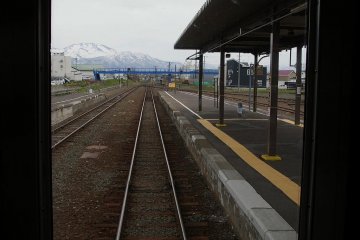On a windy day, the leaves of this coastal forest swirl with the wind, and the drone of waves crashing on sandy shores is heard elsewhere. Tokoro Forest of Remains is ancient, settled by man in an age of myth, long ago during humankind’s first excursions out of Africa into the Americas. Small birds flutter between the trees in search of food, perching and singing before disappearing into the day. Below the leaves, in the shade of the trees, depressions dot the floor of the forest. Once, these were homes, pit-dwellings for ancient humans who lived along the coast, relying on the land for sustenance. Now, preserved in collaboration with Tokyo University and Kitami City, travellers can explore the forest and three museums to learn more about this mysterious culture.
Just across the street from Lake Saroma’s Tsugaru Resort is the main Tokoro Archaeological Museum, which shows off an impressive collection of recovered pottery, religious trinkets, and tools for hunting and food production. Arranged in a timeline, discover the bits of nuance that inform researchers of the differences between cultures that kept no written records. Dating as far back as the Jomon Period, some 14,000 years ago, which precedes the founding myths of Japan, these relics show ancient humans’ ability to create earthenware, weapons fit for hunting Hokkaido’s largest mammals, both of sea and land.
As the eons progress, what remains preserved under the earth tells the story of trade and the maturation of this indigenous culture. Both English and Japanese explanations are available at the front of the museum, sit around a reconstructed hearth, and watch a video explanation of the history of the Lake Saroma region and its deep connection to nature, which proved invaluable to settlement by early humans.
Just outside of the facility, in the forests next to the abundant Hokkaido dwarf bamboo, two separate pit dwellings have been recreated. No matter the season, the faithfully recreated huts provide respite for the hot Hokkaido summers and its famed frigid winters. Adjacent to this are the ruins of pit-dwellings of the past, with short explanations on their size and purpose available to visitors.
After walking through the woods, you will encounter another separate building which holds the archives of this museum. Here, more artifacts of Okhotsk, Satusmon, and Ainu origins are present, including intricate clothing and a preserved dugout canoe. A bit further down the road is another gallery of pots and other unearthed treasures. Each is organized according to its origin culture and purpose.
While this facility is perfect for budding Indiana Joneses, another highlight is birdwatching across the four seasons. From the puffy white and overly cute Shimaenaga to mighty eagles soaring high above. Just as it was generations ago, humanity and nature have occupied this space together in a delicate balance.
This influence became first apparent in the Okhotsk culture, which in their longhouses and pit dwellings kept the skulls of animals set up in the room, a decision which is seen by many researchers as religious. Further from bone and other materials, small icons of animals such as bears were crafted and later found buried with the remains of members of the tribes. Specifically, the worship of bears might have been passed down from the Okhotsk into tribes which, later, after many generations, passed it along to the Ainu. Known as Iomante, the Ainu celebrated the bear god and sacrificed a bear cub after raising it from a cub. While no longer practiced, this ceremony became the centerpiece of a movie filmed in Lake Akan called “Ainu Mosir.”
The Tokoro Forest of Remains is a waystation along the north coast roads featuring more sites related to the Okhotsk cultures. This cultural avenue connects to the more unknown parts of the Japanese historical canon but also extends these forerunners well into the mosaic of sub-arctic indigenous cultures, namely the Inuit and other First Nations, spanning across Siberia, Alaska, and Northern Canada.












